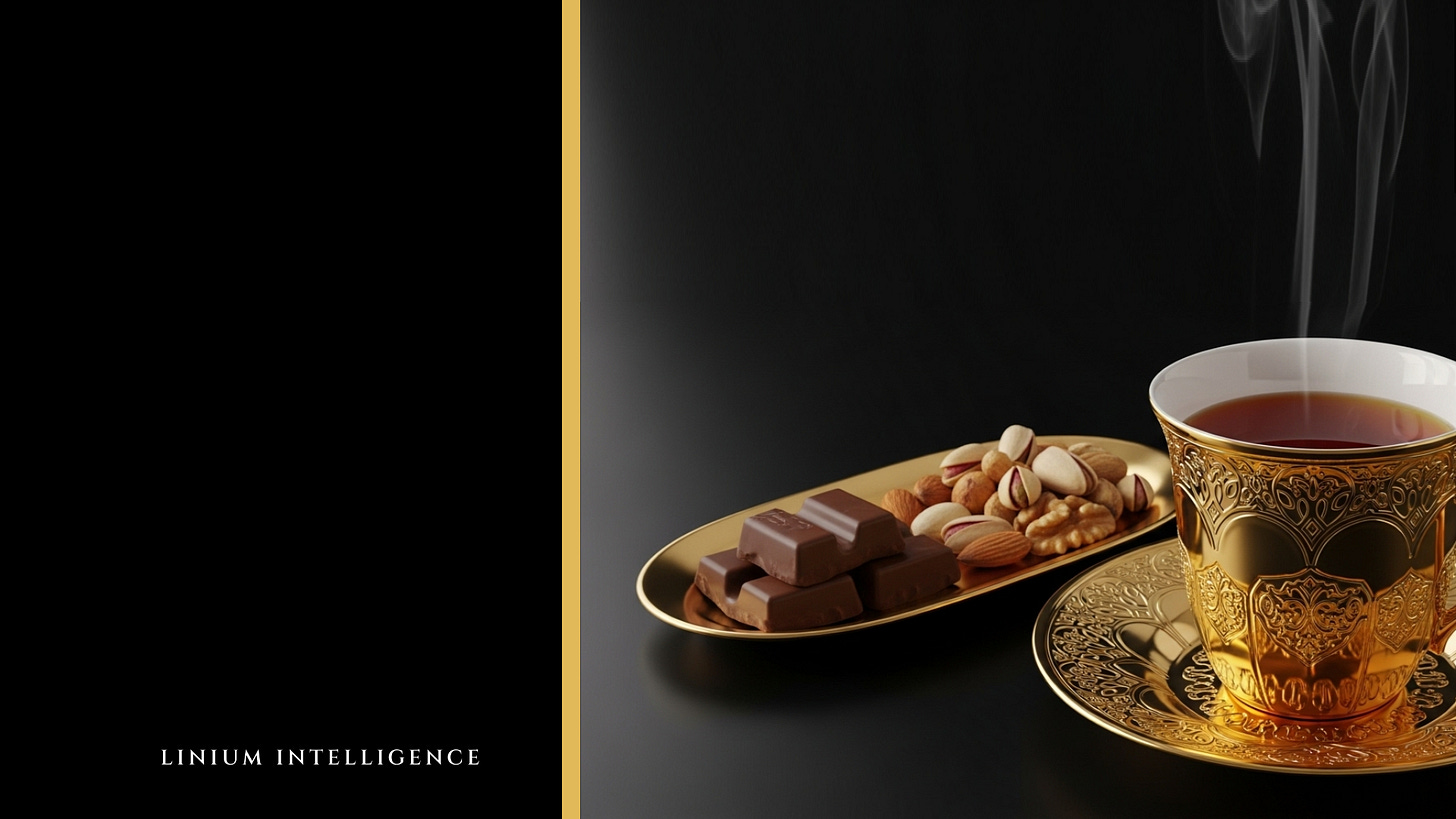Cross-Category Insights: What The Tea Category Reveals About Growth Opportunities In UAE Chocolate Confectionery
The tea category in the UAE provides an instructive comparison set for chocolate confectionery. Both are daily consumable, shelf-stable, impulse-to-routine items purchased across modern and traditional trade, with strong representation of global, regional, and private-label players. UAE tea space is dominated by black tea bags and loose-leaf black tea, yet shows clear structural patterns that chocolate currently lacks, particularly in price discipline, and flavour localisation.
Key Observable Consumption Drivers In UAE’s Chocolate Confectionery Category:
Strong single-serve impulse segment below AED 5.
Multipack is the preferred packaging format accounting for a significant share of volume.
Premium tier remains tiny.
Health claims marginal at a single digit share of the market.
Global giants (Mars, Ferrero, Mondelez, Nestlé) own the volume core.
Date-coated chocolate stable but small gifting sub-segment.
Dark chocolate (>70%) has respectable but minority presence.
New culturally resonant formats (kunafa-pistachio bars) achieve 3x or higher price per gram than mainstream.
Key Observable Consumption Drivers In UAE’s Tea Category:
Cardamom is a top localised flavour.
Regional and private-label players take significant share alongside global brands (Alokozay, Ahmad, Lipton, local brands).
Loose-leaf black tea maintains strong volume.
Health/functional variants (slimming, detox, immune) exist but remain a niche.
Green tea and herbal infusions are present but distinctly secondary to black tea.
Gift-oriented packaging appears early and at high price points (tins, wooden boxes).
Instant karak chai premix (3-in-1) has carved a fast-growing convenience sub-segment.
Origin signalling (Ceylon, Assam, Kenyan) is used even in mass-market products.
Cross-Category Insights And Strategic Implications For Chocolate Confectionery Stakeholders
A single, culturally familiar flavour can achieve broad acceptance across price tiers: Cardamom is present in budget tea packs alongside premium gift tins with zero consumer confusion or perceived downgrade of the core product.
Strategic implication for chocolate: Cardamom represents a potentially low-risk flavour to test in mainstream milk-chocolate bars, filled bites, and multipacks. Unlike kunafa or baklava inclusions, it requires relatively little complex textural work and carries built-in familiarity from tea and coffee moments. Early consumer trials could quickly reveal whether the combination resonates as widely in chocolate as it already does in beverages.Superior execution of a culturally resonant flavour can drive strong consumer preference: In the tea category, brands that consistently deliver the most balanced and familiar cardamom or karak chai profiles (e.g., Alokozay, Ahmad Tea, Filli, Project Chaiwala) enjoy high repeat purchase and shelf velocity in those variants, even when competing against much larger global players.
Strategic implication for chocolate: The brand – whether global, regional, or private-label – that first a genuinely well-liked local, cuturally resonant flavor such as cardamom-filled or karak-inspired chocolate (smooth execution, right intensity, appealing texture) could potentially benefit from the same preference effect seen in tea. Given that private-label chocolate is currently only low-single-digit share, there is clear room for well-executed, culturally attuned entries to grow faster than the category average.Origin signalling adds perceived value even at mass-market price points:
Tea brands have long used place names—“Assam,” “Ceylon,” “Kenyan”—as shorthand for quality, even on products sold at everyday prices. Consumers read the origin as a premium cue without needing the full sourcing story.Strategic implication for chocolate: Clear origin labelling—whether Ghana, Ecuador, Peru or similar—can elevate perceived quality on mainstream products, supporting a modest price premium or helping defend space against low-cost rivals. KitKat in Malaysia employed a similar playbook with their KitKat Dark Borneo which is seeing solid consumer interest across Southeast Asia.
When a flavour resonates locally, consumers tolerate big price-per-gram differences based on packaging and occasion: In tea, cardamom blends can sell multiple times higher in decorative tins or gift boxes than in basic pouches, with no impact on everyday sales—because the flavour already carries cultural and emotional significance. Strategic implication for chocolate: Once a cardamom- or karak-inspired chocolate is widely recognised as an authentic, satisfying flavour, the same recipe can live across impulse formats and premium Ramadan, Eid, or gift boxes. The UAE’s strong gifting culture for boxed chocolate means the higher-margin tier is already there—the key is a flavour that feels familiar, rooted, and culturally meaningful, just as cardamom does in tea.

